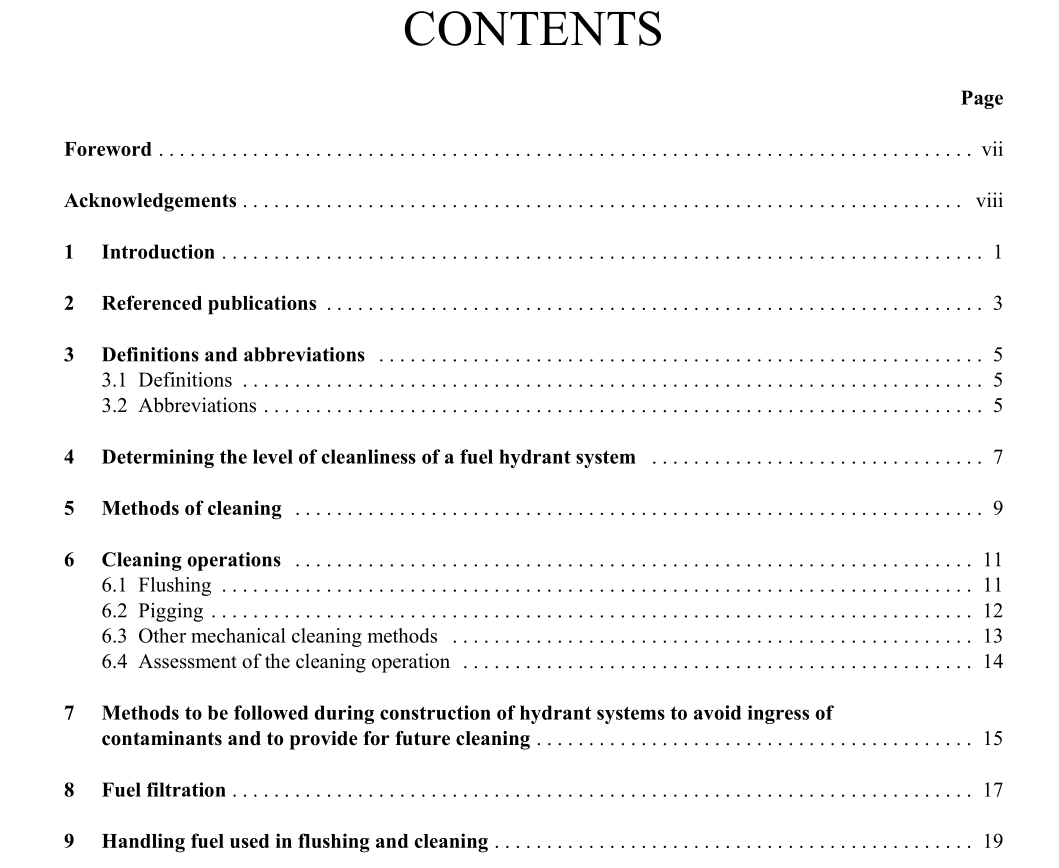API IP 1585 pdf download

API IP 1585 pdf download.GUIDANCE IN THE CLEANING OF AIRPORT HYDRANT SYSTEMS
This publication is intended to give operators of airport fuel hydrant systems guidance in the following: (a) determining the state of cleanliness of existing hydrant systems and possible causes of contamination; (b) methods of cleaning hydrant systems that are showing signs of contamination with particulate material, water and microbiological material; (c) methods to be followed during construction of new systems or extensions to existing systems to prevent the entry of unwanted materials; (d) commissioning procedures; (e) operational practices to maintain the system in a clean condition; and (f) the design of hydrant systems to aid cleaning. If the hydrant system is clean when placed in service and adequate filtration is given to the fuel entering it, it should remain clean in service. In general, only if users are experiencing shorter than normal fuelling vehicle filter element life, or are obtaining unsatisfactory samples upstream of their filters, need action be taken. It should be recognised that sub-micronic particulate will never settle and will eventually be carried to the users’ vehicles. On the other hand, larger debris may never come out so ensuring that none is present is the best way of preventing problems. Such material in the system may provide an environment to trap moisture and lead to microbiological growth. The key to successful cleaning of supply lines and hydrant systems is to fully understand the subject facilities and to develop a detailed implementation plan with objectives, expected results and how the results will be measured. Hydrant operators should formulate their own procedures, which should be incorporated in manuals and operating procedures. In order to assist, it is essential that ‘as built’ drawings and associated records are produced after initial construction and that these are kept up-to-date following any subsequent modification.
4.1 It is not always obvious that there is a dirt or water problem within a hydrant system. Experience has shown that despite clean samples being obtained from low points and pit valves, systems can be contaminated with particulate matter, free water, construction debris or microbiological material, or a combination of these. 4.2 Into-plane operators should be encouraged to report to the hydrant operator, any less than satisfactory samples taken during or after fuelling. It is incumbent on the hydrant operator to properly investigate such reports without undue delay. With the use of fuel filter monitors in fuelling vehicles, the condition of the hydrant fuel is that shown on samples taken from the inlet side of the vessel, as this fuel has not passed through the on-board filter. 4.3 Into-plane operators may experience slugs of water and sediment but later sampling by the hydrant operator may not identify the presence of such material. Monitoring the sumps of into-hydrant filter water separators and other points, from which water and solids can be detected and removed, should be meticulously carried out at a frequency that accords with industry agreed procedures. The presence of water should be investigated to find the source. 4.4 When taking low point and hydrant pit valve flushing samples, especially if a contamination problem is being investigated, the initial quantity of fuel flushed should be visually checked for the presence of any solids or water droplets before these are flushed into the tank of the servicing vehicle or unit. The vehicle pipework system should be designed to facilitate the examination of the samples flushed from the low point. Frequent inspection of the flushing tank should be carried out to check on contents. If an unusual amount of particulate and water is noted, the records should be checked to see which other low points and pit valves have been flushed. Repeat flushing of some pits to determine which have produced the material may be required.









